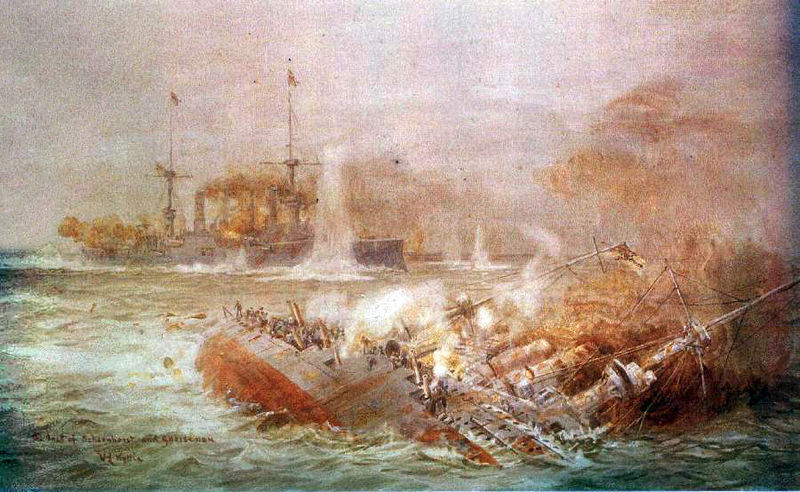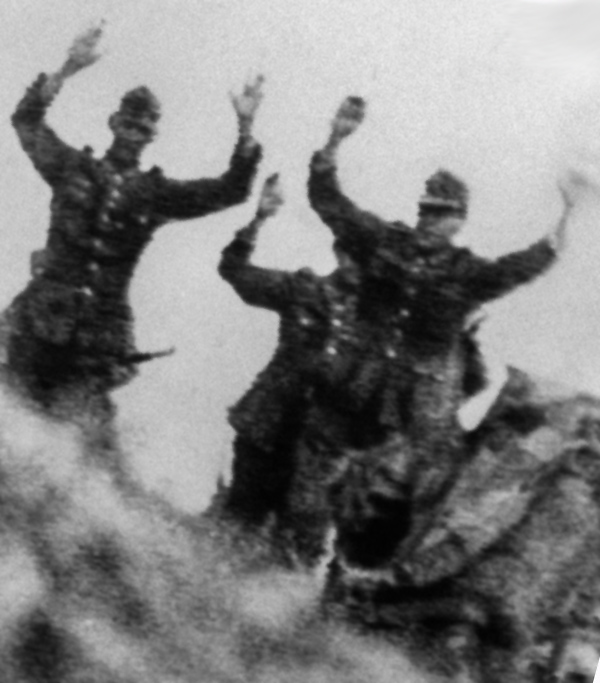
A flotilla of warships, carrying several hundred troops is dispatched from Argentina. It’s objective: to expel any and all British inhabitants from the disputed Falkland Islands, which lay 300 miles off the east coast of South America. The islands are to be taken, even if it means war.
While this sounds very much like the events that precipitated the 1982 conflict between the United Kingdom and the military junta that ruled Argentina at the time, they are actually the opening moves of the lesser-known Falklands Affair of 1770, an international crisis that very nearly caused a European war between Britain and Spain way back in 1770.
History of the Falklands
While Patagonian natives were thought to have visited the Falklands in previous centuries (this is disputed – see comments below), it was a Dutch mariner who was the first European to explore the small rocky archipelago in 1600. Sebald De Weert named the small cluster of islands for himself — he called them The Sebalds.
Ninety years later, the skipper of an English ship named The Welfare would seek shelter from storms in the sound between the two largest islands of the chain. He named the calm waters between the landmasses after the head of the Admiralty at the time, the Viscount of Falkland. The islands themselves soon became known to the British as the Falklands.
No Europeans would inhabit the Falklands until a military hero from France named Louis Antoine de Bougainville established a colony there in 1764. Following his country’s defeat in North America in the French Indian War, Bougainville oversaw the fledgling settlement at Port Louis on East Falkland. The following year, oblivious to the small French colony already in place, the British built their own base on West Falkland named Port Egmont and issued a claim to the entire island chain for King George.
The Crisis Builds
In 1767, the French transferred control of Port Louis to Spain who renamed it Puerto Soledad. The Spanish administered the settlement from their seat of colonial power in Buenos Aires. Almost immediately, Spain laid claim to the entire chain and ordered the British to withdraw. The British reciprocated by demanding Spain leave instead. Isolated and far from home waters, the British had few resources with which to press their demands; the Spaniards on the other hand assembled an invasion force of 1400 men and five warships: Industria, Santa Barbara, Santa Catalina, Santa Rosa and Andaluz. A colonel by the name of Don Antonio Gutierrez was placed in command of the force and the expedition set out in late May of 1770. By June 10, it arrived in the waters off Port Egmont.
Shots Fired
The British commander, George Farmer, and his small section of recoats had fortified the base with a wooden blockhouse and a battery of eight 12-pounders, but it was hardly enough when the Spaniards unexpectedly landed their soldiers on the island. The British garrison exchanged fire with the Spanish troops that marched on the settlement. The Spaniards returned fire. Recognizing that his meager garrison was outnumbered, Farmer surrendered the base. Within three weeks, the British garrison and the civilian settlers were loaded on ships and sent home to England.
War Scare
News of the attack enflamed British public opinion and saw London very close to declaring war on Spain. Open hostilities very well might have ensued, were it not for France’s refusal to back Spain. After only recently concluding the long and costly Seven Years War with Britain, the French crown was eager to avoid more fisticuffs with its enemy across the Channel. Spain was forced to swallow its pride and apologize to London, declaring that the governor in Buenos Aires had moved on the Falklands without orders from home. By 1772, the Union Jack was flying once more over Port Egmont in Western Falkland, but the Spaniards remained in control of the eastern island.
Britain withdrew its forces two years later. All that remained of the Anglo presence there was a small metal plaque that declared the Falklands as the property of the United Kingdom. Spain pulled its garrison from the islands in 1806. A marker on its side of the archipelago announced Spain’s claim to the entire chain.
The islands were quite for decades, but that wouldn’t be the last time the Falklands would appear in the pages of history.
- In 1820, an American privateer named David Jewett sought refuge to refit his damaged vessel Heroina at the Falklands. Licensed by the government of the newly independent United States of South America, which would later become Argentina, Jewett claimed the islands for his employers in Buenos Aires. It was an event that would have dire consequences 162 years later.
- In 1828, a 36-year-old merchant from Hamburg named Louis Vernet would establish a commercial fishing, seal hunting and cattle outpost on the eastern side of the Falklands. The government in Argentina, thrilled at the prospect of non-British settlers occupying the islands, appointed Vernet the governor. But the ever-shrewd trader also obtained approval from London to set up shop on the remote islands. The British were equally happy to see the islands developed and settled. In 1831, Vernet seized three American fishing vessels for exceeding a sealing quota he himself imposed for the islands. Vernet arrested one of the American skippers and accompanied him to Buenos Aires to stand trial. In his absence, the United States warship Lexington attacked the settlement and arrested seven administrators on charges of piracy. Finding only impoverished and underfed colonists, the commander of the American expedition ordered his sailors and marines to remove the inhabitants and return them to South America.
- After years of laying empty, the British military re-occupied the islands in 1840, establishing a port facility for trans oceanic shipping. It would become a vital waypoint for the Royal Navy for the next several decades.
- War would return to the waters near the Falklands in 1914, when the Kaiser’s Imperial Asiatic Fleet arrived off the islands in December to seize and destroy the British port facilities there. As the German cruisers Scharnhorst, Gneisenau, Nurnburg, Dresden and Leipzig along with three support vessels approached Port Stanley, Royal Navy ships lying in wait ambushed the raiders. The battleships Invincible and Inflexible along with the cruisers Cornwall, Kent and Carnavon and light cruisers Bristol and Glasgow attacked the German fleet, sinking all the enemy cruisers and two of the support ships. Nearly 2,000 Germans perished in the battle including the admiral Maximilian von Spee. It was an unmitigated disaster for the Kaiser. British casualties were astonishingly light: no ships lost, 10 sailors dead.
- During the 1960s, Argentina began to press its historic claim to the Falkland Islands, which it calls Las Malvinas. Hoping in vain to seek some form or redress in the United Nations, relations between Buenos Aires and London grew stormy throughout the 1970s. In 1982, the military dictatorship of Argentina sought to distract citizens from the worsening domestic economic situation by grabbing the islands. The move led to war a with Great Britain that cost the lives of nearly 1000 people. Tensions persist between the two countries over the islands.
- As recently as January of this year, British Prime Minister David Cameron assured voters that his country would fight to hold onto the Falklands. The Argentine president has accused London of colonialism.










Apologies for being a pedant, but the Falklands were uninhabited when first discovered by Europeans, and there is no conclusive evidence at all that South American natives ever visited the islands.
No need to apologize. I had read that Patagonians had possibly visited the Falklands but not settled there. I revised the sentence accordingly. You have read though that no humans had set foot on the islands until the Dutch? Thanks for bringing that up.
While the situation over the Falkland Islands may not have changed, other things clearly have. Looking at the names of the British Cruisers in 1914 the Carnavon would sure be spelled Caernarfon these days. I canstill remember a trip to Wales when I was a young lad (only twenty or so years ago) when names like these were still a bone of content!